You might not realize it, but Corning is probably a pretty big part of your everyday life.
For starters, it’s quite possible that you occasionally use Corningware or Pyrex cookware to whip up some grub.
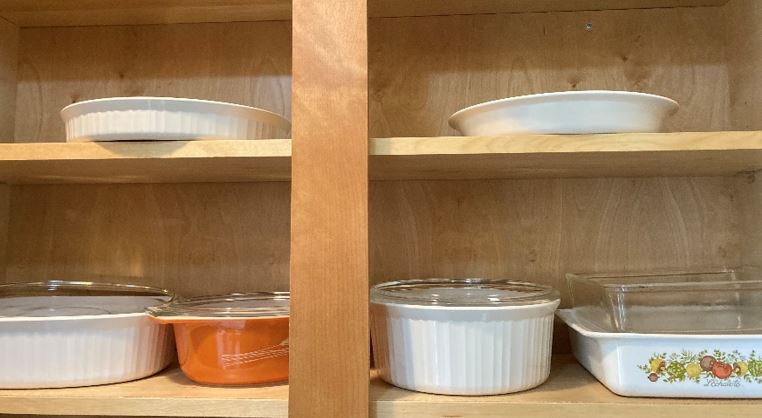
That’s a photo of an actual cabinet shelf in my kitchen – and every item is from Corning, most dating back to when my wife and I got married in 1983.
The funny thing is that Corningware and Pyrex are the only products I’ll mention in this piece that are no longer made by Corning, which spun off its consumer division in 1998.
I hope that revelation didn’t make you stop reading this article on your iPhone, whose glass front was manufactured by Corning.
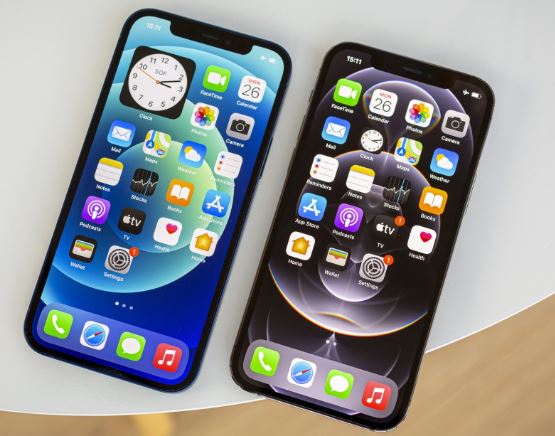
What’s that? You use an Android? Well, the glass on Samsung and other Android phones also is produced by Corning.
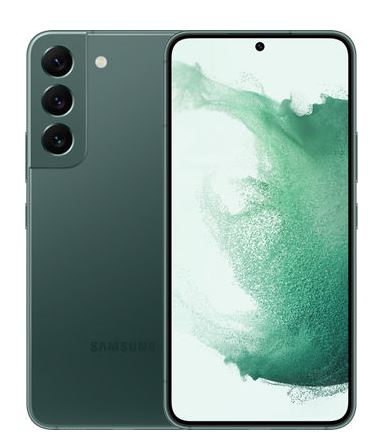
The LED display on the big-screen TV you watch? Materials for the catalytic converter under your car? Optical fiber that brings the Internet into your home? Yep … Corning, Corning and more Corning.
And here’s another thing that Corning produces: INCOME for investors. Its stock has been paying a reliable, growing dividend for years.
I decided we should have some of those dividends for our Income Builder Portfolio … so on Wednesday, May 11, I executed a purchase order for about $1,000 worth of Corning (GLW) stock on behalf of this site’s co-founder (and IBP money man), Greg Patrick.

As sometimes happens with limit orders, this one executed in two transactions a moment apart.
The 28-share position immediately adds about $30 to the IBP’s projected annual income stream, pushing the portfolio’s yearly dividend total past the $3,700 mark.
I’ll talk more about Corning’s dividend in a minute, and I’ll also get into the stock’s attractive valuation. But first, a little about the company’s history and current financial picture.
An Illuminating History
Corning’s story began in 1851, when Amory Houghton bought the Bay State Glass Co of Cambridge, Mass. In 1868, the business moved to Corning, N.Y. And in 1875, Corning Glass Works was incorporated.
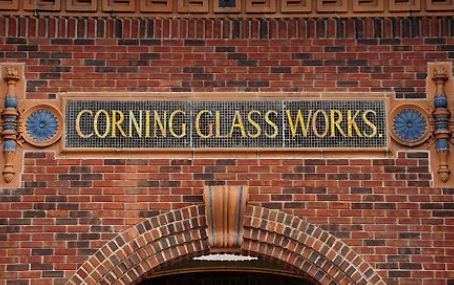
The company would continue to go by that name — which explains its stock symbol, GLW — until 1989, when it simply became Corning Inc.
In 1879, Corning developed a bulb-shaped glass encasement for Thomas Edison’s new incandescent lamp. The design became so successful that, by the early 1900s, that product accounted for half of Corning’s business.
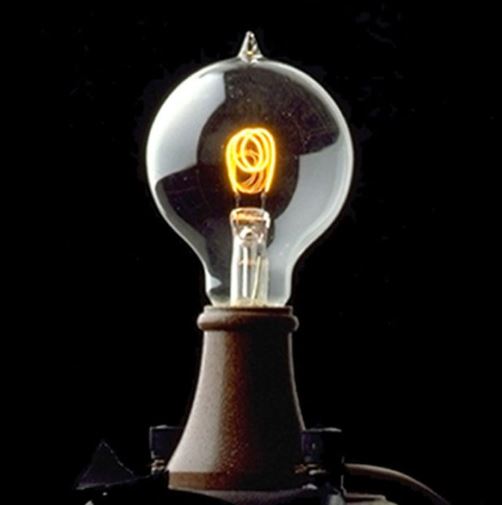
At that time, bulbs were made by hand, one piece at a time, limiting production to a few hundred bulbs a day. Eventually, Corning mass-produced the bulbs, which became an affordable must-have for Americans.
In 1913, Corning physicist Dr. Jesse Littleton asked his wife to bake a cake on a piece of heat-resistant glass, which held up well throughout the baking process. That was the precursor to the Pyrex brand, which was created two years later and became synonymous with the line of durable glass cookware that’s in so many kitchens today.
In 1926, Corning invented a high-speed ribbon machine that created 400,000 bulb blanks in a 24-hour period. A few years later, the machine would be used to make radio bulbs, driving down the price of the radios that would become a staple in households everywhere.
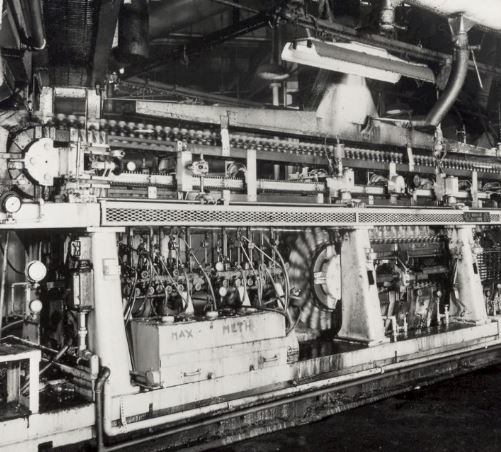
In 1934, Corning scientist Dr. J Franklin Hyde developed silicones — an engineered material that is a cross between glass and plastic. Hyde’s experimentation with vaporized liquids would lead to a process for producing a nearly pure silica compound.
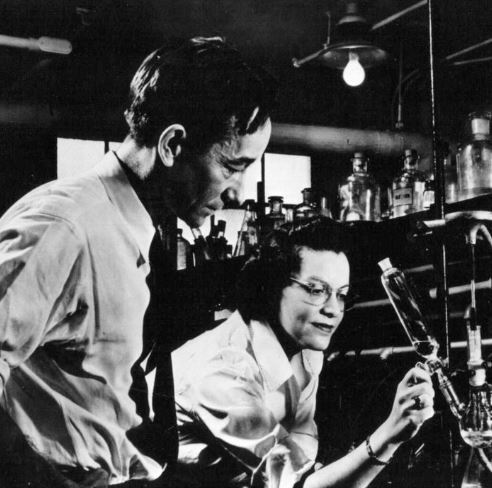
This process, known as vapor deposition, and the material, high purity fused silica, would later be used by Corning to create products such as spacecraft windows, optical lenses, optical fiber and telescope mirrors.
In 1943, Corning partnered with Dow to produce silicones, and the joint venture came under the Dow Corning name.
In the 1940s, Corning revolutionized the television industry by inventing a process to mass-produce TV picture tubes. In 1949, a new method for the casting of television funnels would be discovered. Soon, the phenomenon of TV would become attainable for millions of people.
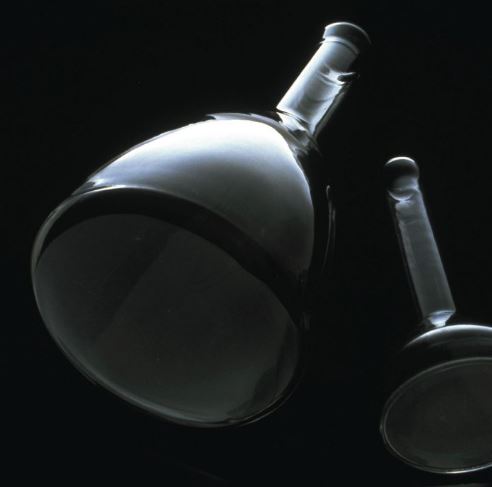
In 1961, the Mercury spacecraft — equipped with heat-resistant windows made by Corning — made the first successful American manned flight. Corning would go on to create the window glass for every manned American spacecraft, from Gemini and Apollo flights to the space shuttle, and would continue to produce glass for numerous applications within the space industry.

In 1970, the company developed the first optical fiber capable of maintaining the strength of laser light signals over significant distances. That paved the way for the commercialization of fiber optics for telecommunications.
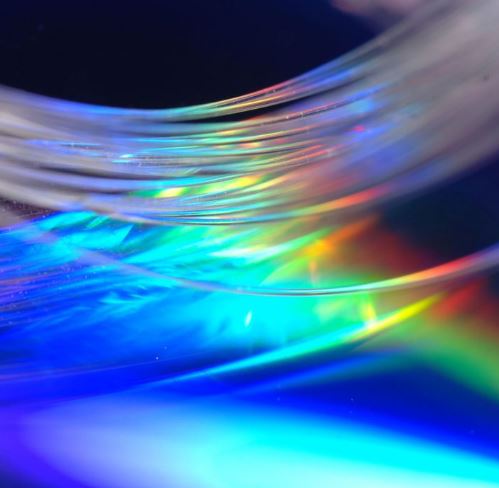
In 1972, Corning came up with the cellular ceramic substrate for automotive emissions control, which is now the standard for catalytic converters worldwide.

In the 1980s, research labs working on active matrix liquid crystal displays (LCDs) found that ordinary glass was not precise, stable, or durable enough to meet their requirements. Corning’s “fusion” process made it possible for the LCD industry to construct large, high-quality, flat-panel displays possible for various new applications.
Corning, which already produced glass for the Hubble Telescope, used a similar but even larger glass for the Subaru Telescope mirror in 1997. Located in Hawaii and shaped like a 27-ton contact lens, it was more than 26 feet across but only a few inches thick — one of the largest pieces of glass ever made.
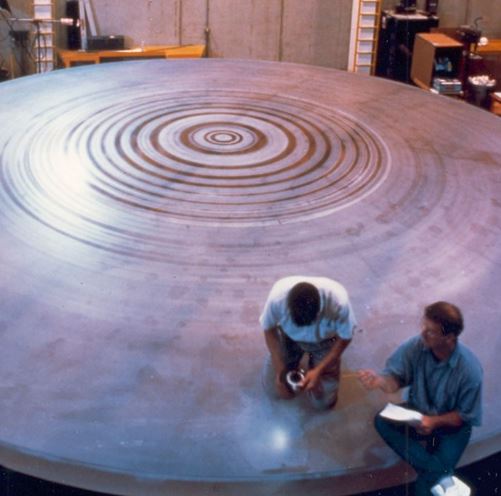
Dow Corning filed for Chapter 11 bankruptcy in 1995 after being sued for billions of dollars due to the manufacture of faulty breast implants. The joint venture didn’t emerge from bankruptcy until 2004, leading to the eventual disillusion of the partnership between Corning and Dow.
Cellphone manufacturers asked Corning to find a thin but damage-resistant glass for their devices, and Gorilla Glass was born in 2007. It since has become the standard for smartphones, tablets, PCs and televisions. Gorilla Glass Victus is the latest iteration of the product, with superior protection against scratches and breakage while maintaining optical clarity and touch sensitivity.

In 2008, Corning introduced Gen 10 glass, which offered about 70 percent more surface area than the previous size. At about 9×10 feet, a single sheet of Gen 10 glass can produce numerous large TV panels, ultimately making LCD televisions more affordable.
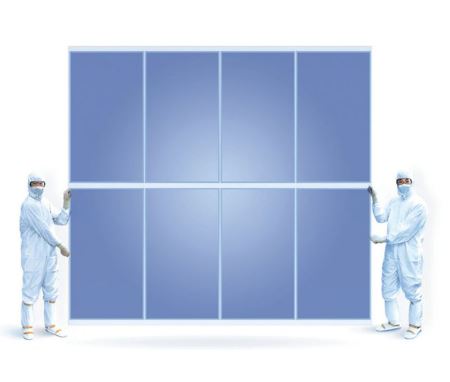
Two years later, Corning produced the Synthemax surface, which supports the growth and differentiation of stem cells, opening the door to treatments of degenerative diseases.
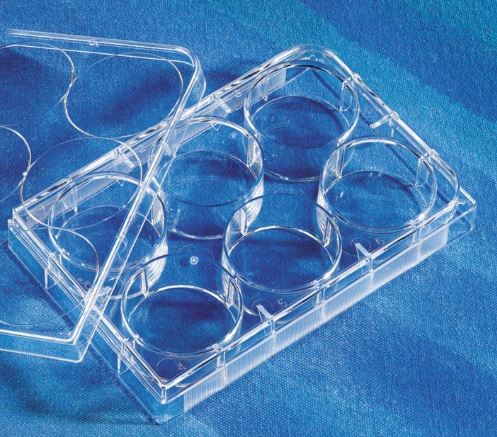
In 2015, Corning and Dow officially agreed to sever their joint venture. As part of the breakup, Corning received $4.8 billion and 40% of Dow’s Hemlock Semiconductor Group.
Five years later, Corning acquired the rest of Dow’s stake in Hemlock, giving Corning 80.5% of the world’s leader in polysilicon production. The remainder is owned by Shin-Etsu Handotai of Japan.
Corning Now
Today’s Corning is the leader in four separate industries: display glass, optical fiber, cover glass, and emissions substrates/filters. It has significant relationships with many corporations, including Apple (AAPL), AT&T (T), Verizon (VZ), Crown Castle (CCI), Merck (MRK) and Pfizer (PFE).
Corning has a market cap of about $30 billion and spends upwards of $1 billion a year on research and development. Its fiber production has made it a major player in U.S. carriers’ build-out of their 5G networks. And its Hemlock division supplies crucial materials for the semiconductor and solar industries.
It has operated under five segments:
- Display Technologies: glass substrates for LCDs that are used primarily in televisions, notebook computers, and flat-panel desktop monitors.
- Optical Communications: products for optical-based communications infrastructure for services such as video, data, and voice communications; and optical-based communication networks sold to businesses, governments, and individuals.
- Environmental Technologies: ceramic substrates and filter products for emissions control in vehicles.
- Specialty Materials: display optics and components, semiconductor optics components, aerospace and defense, astronomy, ophthalmic products, telecommunications components, and cover glass that is optimized for display devices.
- Life Sciences: labware and equipment used for advanced cell culture research, bioprocessing, genomics, drug discovery, microbiology and chemistry; the products are used by pharmaceutical and biotechnology companies, academic institutions, hospitals, government entities, and other facilities.
During Corning’s Q1 2022 earnings call on April 26, CEO Wendell Weeks spoke with enthusiasm about Hemlock as he introduced a sixth segment:
We typically spend the majority of our time discussing the results within our five segments. However, important growth opportunities for our “More Corning” strategy also reside in the segment we have historically referred to as “other.” To better reflect the significant contributions and potential of these initiatives, we’ve renamed it “Hemlock and Emerging Growth Businesses.” This segment grew 38% year-over-year in the first quarter.
So today, I’m going to spend some time talking about what’s going on, and how it underscores our confidence that we will continue to deliver durable, multiyear profitable growth. Hemlock currently delivers most of the sales in the segment. Hemlock manufactures ultra-pure poly silicon for the semiconductor and solar industries.
As a reminder, Corning owns 80.5% of Hemlock as a result of Hemlock’s purchase of DuPont’s ownership in the company in 2020. This was a great transaction for Corning. We didn’t put any money into the transaction, and we gained an additional 40% interest in Hemlock’s strong semiconductor business, that also has the upside potential reflected in the solar market.
Recently, we secured multiyear take or pay commitments for solar, and we expect demand to grow. Additionally, as the renewable energy industry evolves, we believe that Corning’s technical and manufacturing capabilities … can provide significant benefits. We believe this business has excellent growth potential.
As for other data from one of the company’s better financial quarters in recent years, here’s a slide Corning presented: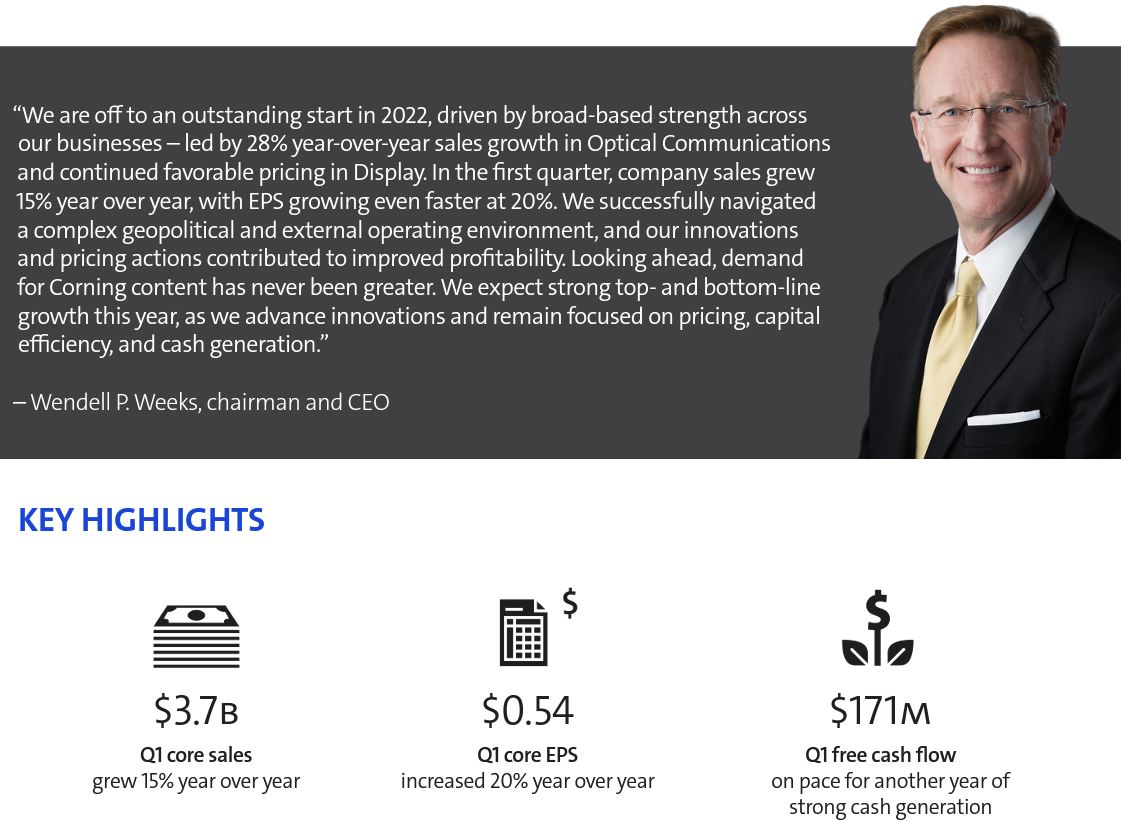
Despite facing inflationary pressures and supply-chain issues, Corning’s executives said they expect full-year sales to exceed $15 billion for the first time in company history. Hemlock is projected to provide as much as $1.45 billion in sales.
Dividend Dandy
In just about every year since 2011, Corning has grown its dividend by at least 10%.
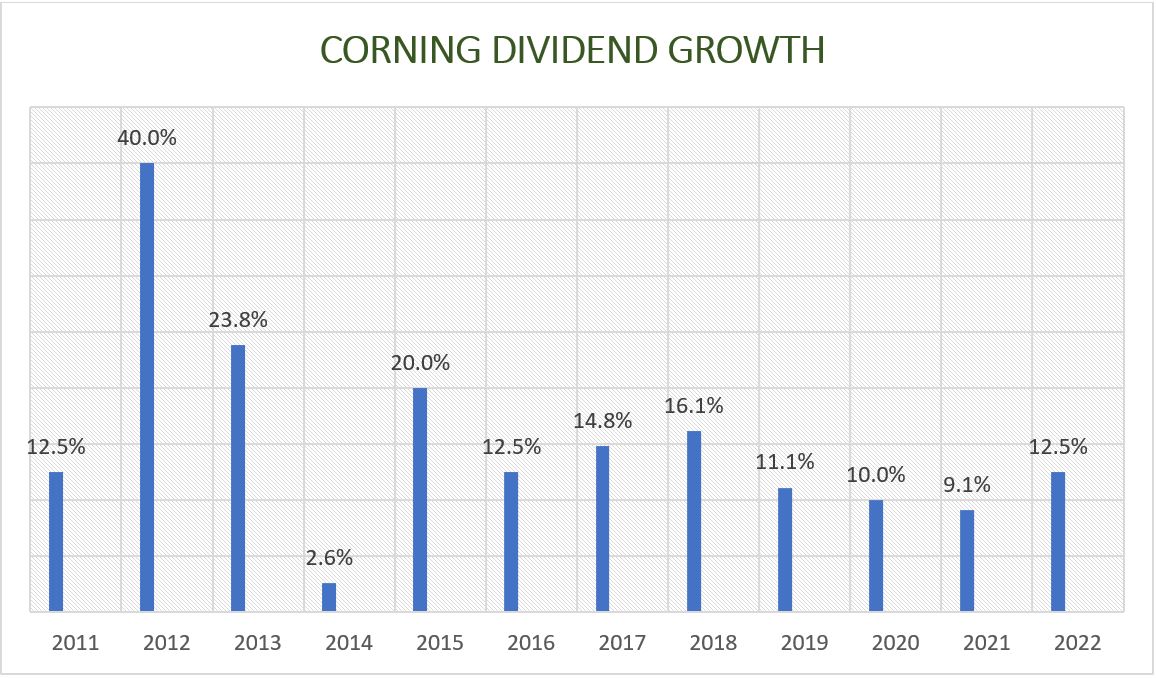
On Feb. 2, the company announced a 12.5% raise for 2022. Simply Safe Dividends gives Corning a score of 77, solidly in the “safe” range. The stock yields 3.1%.
Chief financial officer Edward Schlesinger said the increase “reflects Corning’s confidence that we’re building a solid foundation for the future,” adding that the company is “well-positioned to invest in the opportunities we see ahead while continuing to reward our shareholders.”
He then went on to say:
“Growing dividends is an important component of our ongoing priorities for disciplined capital allocation. With this 12.5% increase to the quarterly dividend, we are again meeting the Strategy & Growth Framework goal of at least 10% annual increases through 2023.”
As a Dividend Growth Investing proponent, I like companies that make a commitment to growing shareholders’ income streams. Projecting more double-digit dividend growth for 2023 is the cherry on top.
The analysts at Morningstar Investment Research Center have taken note, too, saying:
We rate Corning’s capital allocation as Exemplary based on a sound balance sheet, exceptional investments, and appropriate shareholder distributions. The firm has consistently balanced investments in its own innovation with dividends and share repurchases, and we expect this to continue.
Corning’s ex-dividend date is May 27, so those who want to receive the next quarterly payment of .27/share must own the stock by market close of May 26.
Valuation Station
The following FAST Graphs image provides a treasure trove of valuation information, starting with the way the red-circled areas indicate that the current “blended P/E ratio” is almost exactly in line with the multiple over the last several years. (That’s also shown by the way the end of the black price line is touching the blue normal P/E ratio line.)
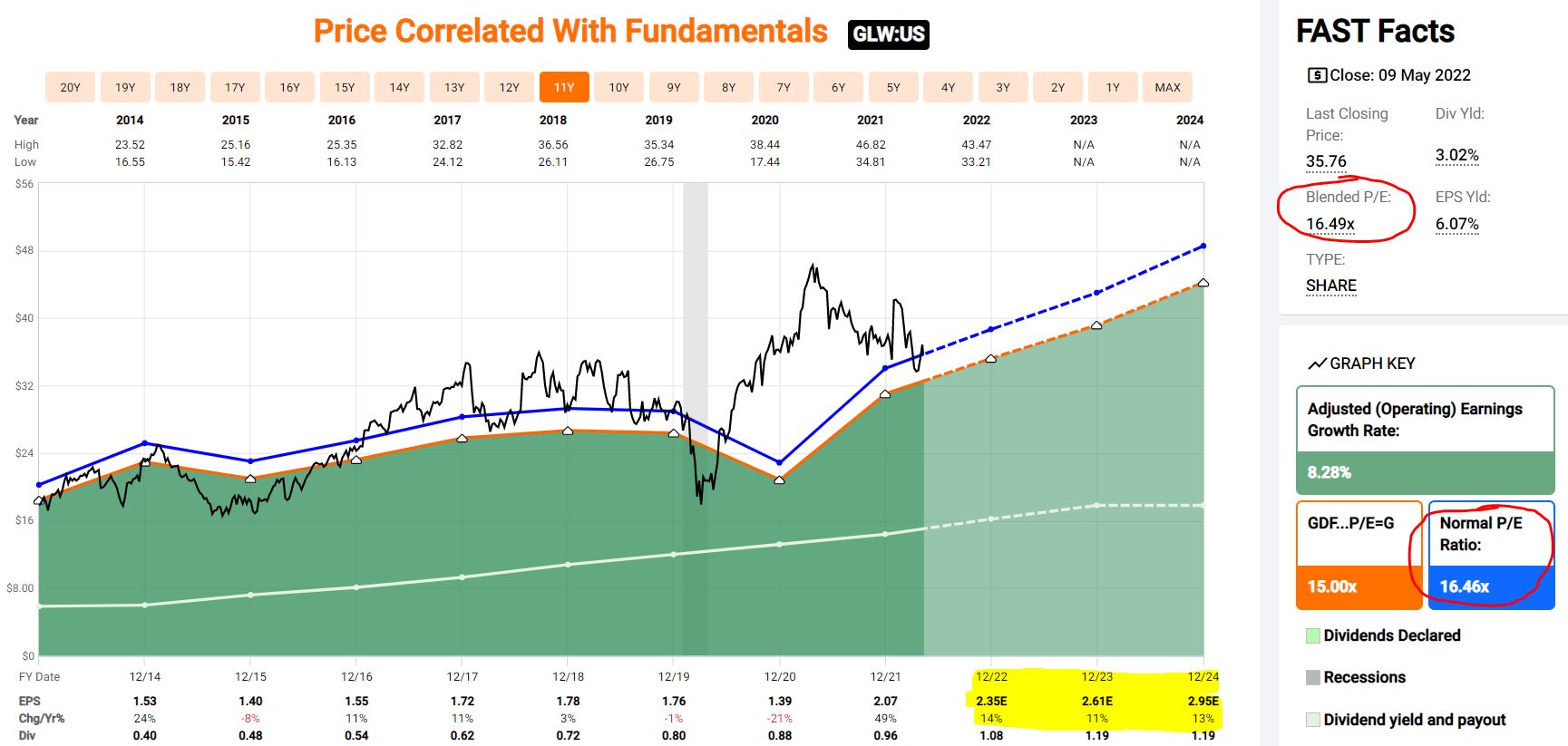
Looking at the jagged black line, you can see how volatile the stock price can be — and how overvalued it got last year. And the yellow-highlighted area shows that earnings are expected to grow annually by double-digit percentages through 2024, which is very nice.
I also like to take a look at EBITDA — earnings before interest, taxes, depreciation and amortization — because it is a more pure indication of profitability than earnings alone.
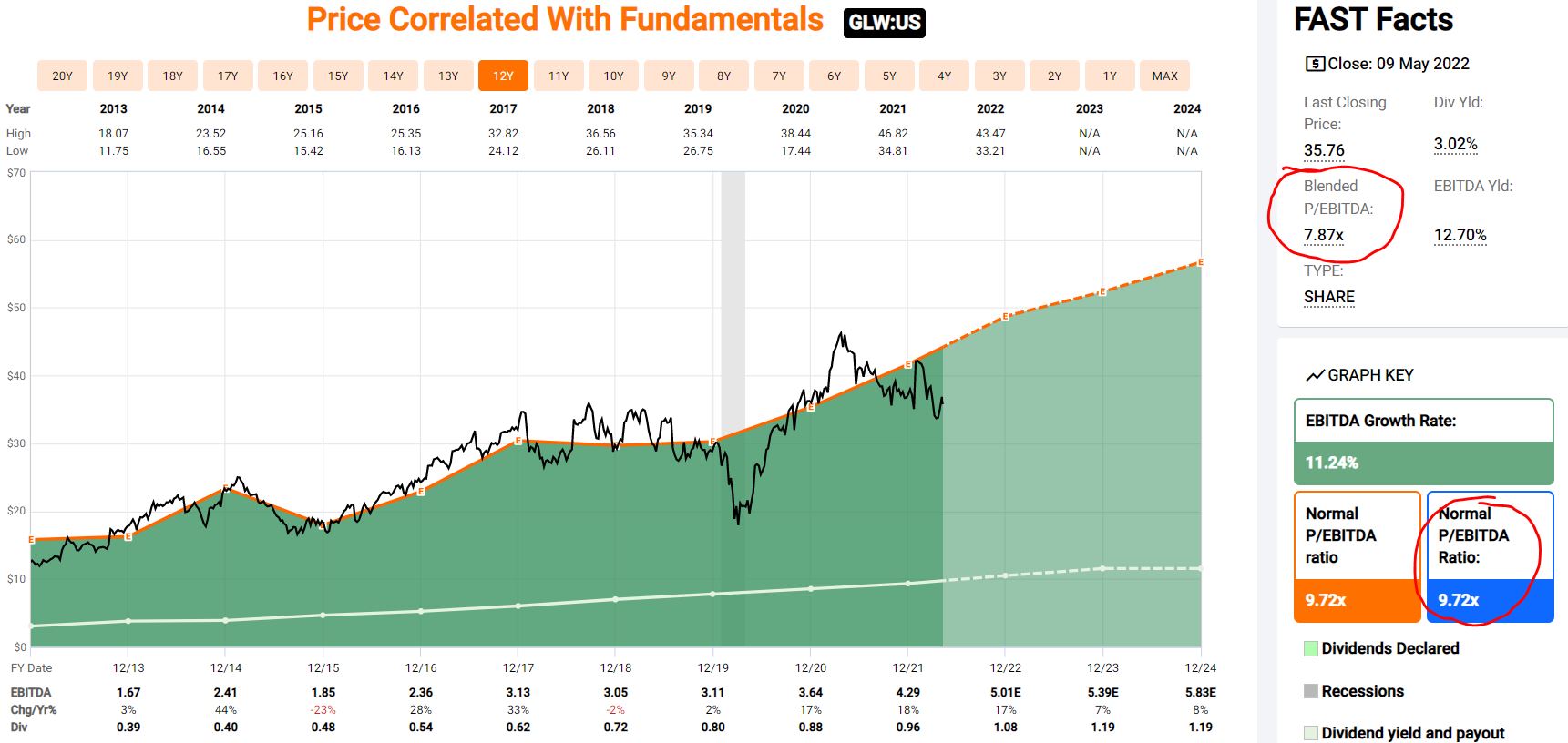
The FAST Graphs image using that metric shows Corning to be undervalued compared to its normal EBITDA multiple.
A forward P/E ratio of 15.3 and a very attractive PEG ratio of 0.7 also make GLW look undervalued.
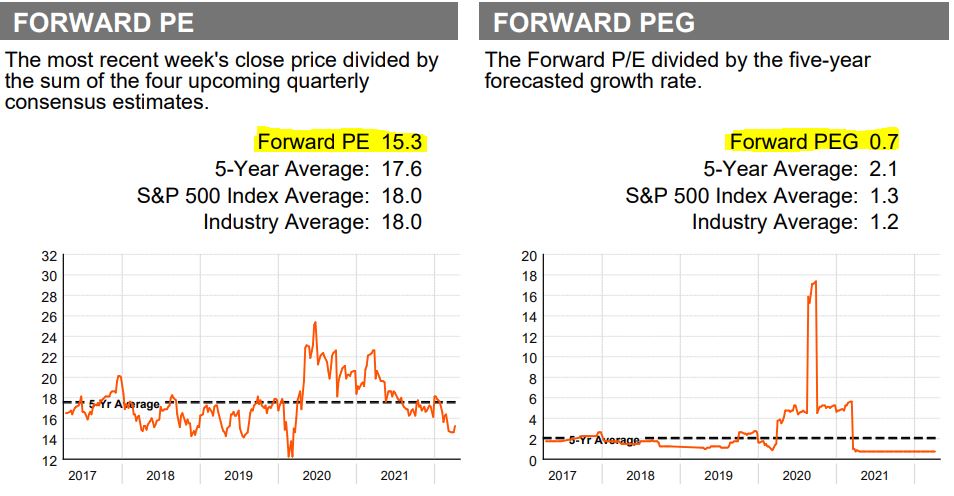
As such, analysts monitored by Refinitiv find Corning to be quite appealing — with 4 “strong buy” ratings and 7 “buy” calls.

Morningstar has established a $42 fair value estimate for Corning; CFRA has a $47 price target; and Argus came out of earnings very bullish, with a $54 target.
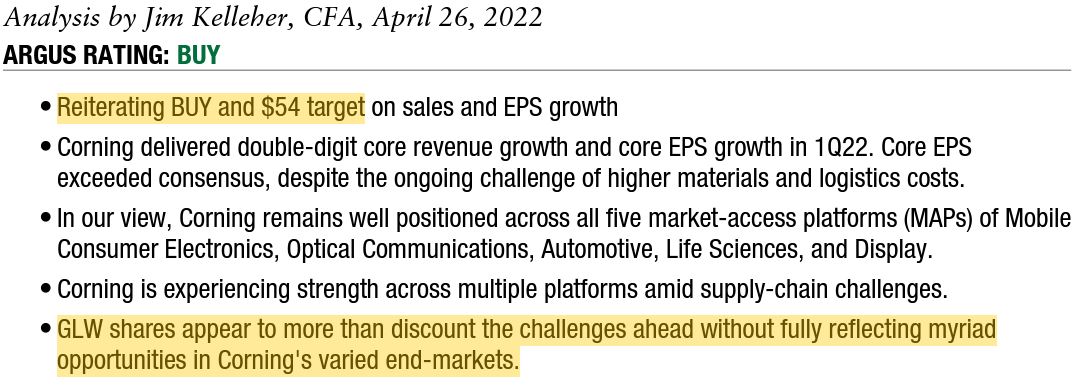
With a $44 median 18-month target and a forecast for as much as 70% price appreciation over the next 3-5 years, Value Line has included Corning on its list of “Stocks for Dividend Growth with Low Risk.”
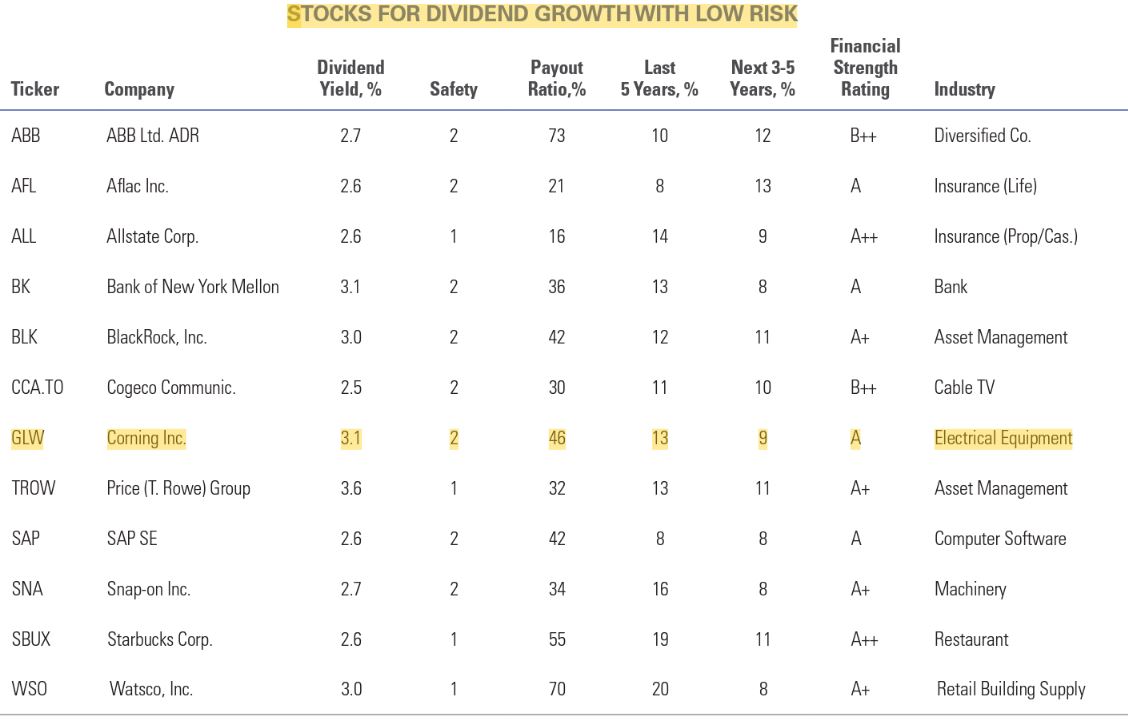
Wrapping Things Up
Investopedia defines a “pick-and-shovel play” as “an investment strategy that invests in the underlying technology needed to produce a good or service instead of in the final output. It is a way to invest in an industry without having to endure the risks of the market for the final product.”
Well, Corning is a classic example of a pick-and-shovel play. The company doesn’t make semiconductors, cellphones, 5G networks or televisions, but its cutting-edge products are absolutely vital to those industries, and more.
With this purchase of GLW, the Income Builder Portfolio now has 48 positions; to see them all, as well as links to every IBP-related article I’ve written, check out our home page HERE.
I also manage the Growth & Income Portfolio for this site, and its home page can be found HERE.
In addition, I regularly make videos for our Dividends & Income Channel on YouTube. My most recent one, on Morgan Stanley (MS), is HERE.
As always, investors are strong urged to conduct their own thorough due diligence before buying any stocks.
— Mike Nadel
We’re Putting $2,000 / Month into These StocksThe goal? To build a reliable, growing income stream by making regular investments in high-quality dividend-paying companies. Click here to access our Income Builder Portfolio and see what we’re buying this month.
Source: DividendsAndIncome.com

